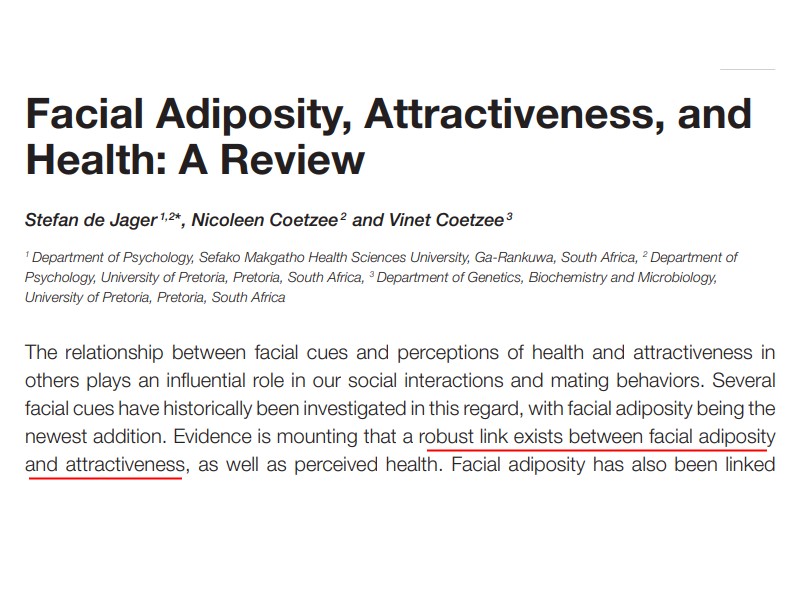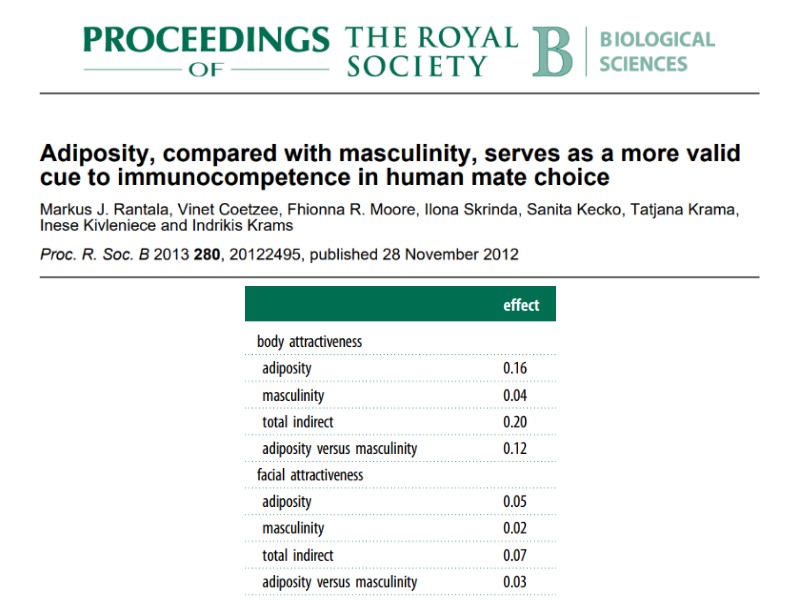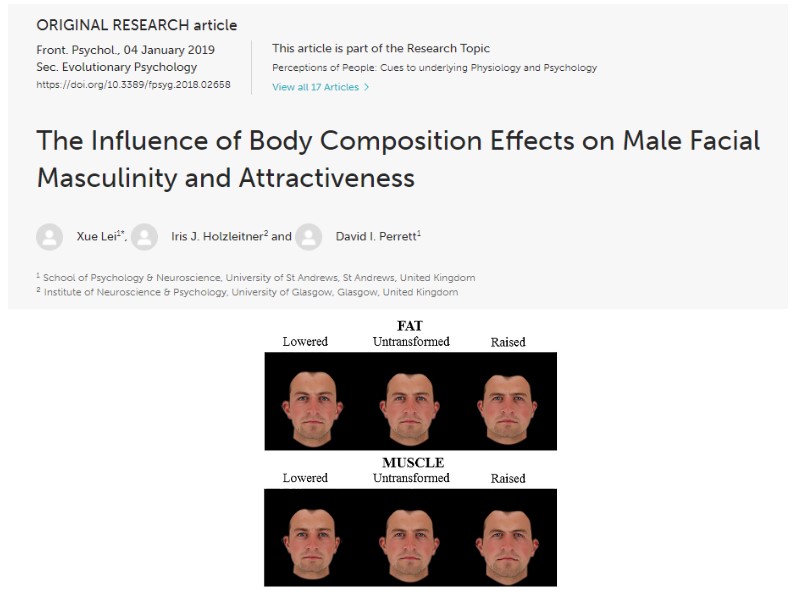Believe it or not, scientific studies find facial fat deposits are one of the strongest determinants of attractiveness in a male face. “The relationship between facial cues and perceptions of health and attractiveness in others plays an influential role in our social interactions and mating behaviours.” (Jager et al, 2018). These researchers describe that “facial adiposity was a better predictor of attractiveness [than] sexual dimorphism, averageness, and symmetry, for male faces.” Their experiments proved that tiny fluctuations in BMI (Body Mass Index) of only “1.3 kg/m2” can already be detected in the male face and contribute to our perception of male attractiveness.

Facial fat deposits also seem to function as a reliable indicator of the responsiveness of the male immune system. “According to the ‘good genes’ hypothesis, females choose males based on traits that indicate the male’s genetic quality in terms of disease resistance.” “Women do not consistently prefer masculine looking men, nor is masculinity consistently related to health across studies”. “Adiposity, but not masculinity, significantly mediates the relationship between […] immune response (hepatitis B antibody response) and attractiveness for both body and facial measurements.” (Rantala et al, 2013a). In this large collaborative study scientists from Universities across the UK, Finland, South Africa, Latvia and Estonia took photographs of men from a Latvian University and measured adiposity and circulating testosterone before and after vaccination. “Men’s ability to produce antibodies in response to the hepatitis B vaccine correlated positively with facial attractiveness, suggesting that men’s facial attractiveness indicates immunity in humans. Thus, by choosing men with attractive faces as partners, women may get direct benefits by avoiding contagion and indirect benefits by increasing health and immunity of their offspring.” (Rantala et al, 2013b).

Unlike in females, the facial fat deposits do not affect “cheek bone prominence” in men (Hodges-Simeon et al, 2021). “As expected, facial correlates of fat mass and muscle mass both positively affected perceived facial masculinity in men. The results [show] findings of heavier men being perceived as more masculine.” (Lei et al, 2019). This may sound like a positive association, but women often do not rate more masculine faces as more attractive.
“Masculinity is perceptually associated with some negative personality traits, which might explain why women prefer less masculine men for long-term partners. Indeed, perceived facial masculinity was found to increase perceived dominance, lower perceived paternal investment and decrease perceived trustworthiness. Complementing these findings, several studies have found that high testosterone (an androgen contributing to male sexual dimorphism) is associated with lower likelihood of marriage, higher divorce rates and higher rates of domestic disputes. Hence, less masculine men may be advantageous for long-term relationships.” (Lei et al, 2019). This is a complicated but important mechanism; these authors describe that women find lower facial fat in a man more attractive even if they appear less masculine.

The relation between facial fat deposits to attractiveness in males is not a casual or weak trend; male facial fat deposits signify real health factors, and this strongly impacts if they are considered attractive.
References
Rantala, M. J., Coetzee, V., Moore, F. R., Skrinda I, Kecko S, Krama T, Kivleniece I, Krams I., 2013 (a). Adiposity, compared with masculinity, serves as a more valid cue to immunocompetence in human mate choice. Proc Biol Sci. 280 (1751). 20122495. DOI: 10.1098/rspb.2012.2495.